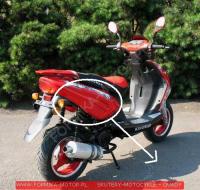Hello everyone. I need to make a cast of a certain aluminum plate. I admit that I have never done it. Of course I read similar topics on the Internet. I found 2 people who reportedly melted alu at home (with a burner) But I have a few questions that I found the answer. that aluminum melts at a temperature close to 660'C, as I do not have a suitable furnace, I would try to melt the alu in a cast iron crucible under a gas or electricity burner. heat such a metal so that at 180 degrees the alu finally melts. I hope some of you have done something similar before. My casting is a bit different. My point is to only cast the surface of the casting - not the whole thing! Will the molten aluminum decompose evenly on the "not flat" surface, or is it rather impossible? The last question - does this aluminum have the same properties as before melting?
Greetings
Please use the "Spelling" button before posting. Spelling errors will not be tolerated, regulation point 15.
Do not delete moderation entries!
Please correct it.
[_P_]
Greetings
Please use the "Spelling" button before posting. Spelling errors will not be tolerated, regulation point 15.
Do not delete moderation entries!
Please correct it.
[_P_]



 before posting.
before posting.